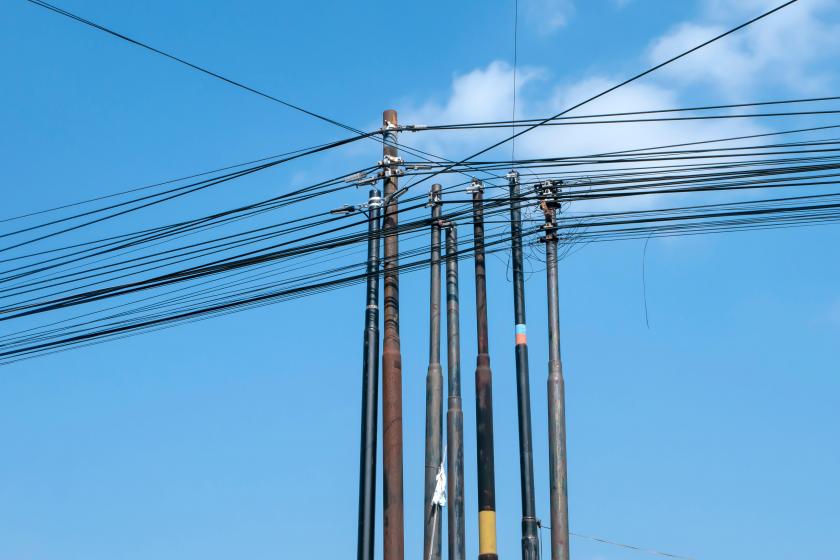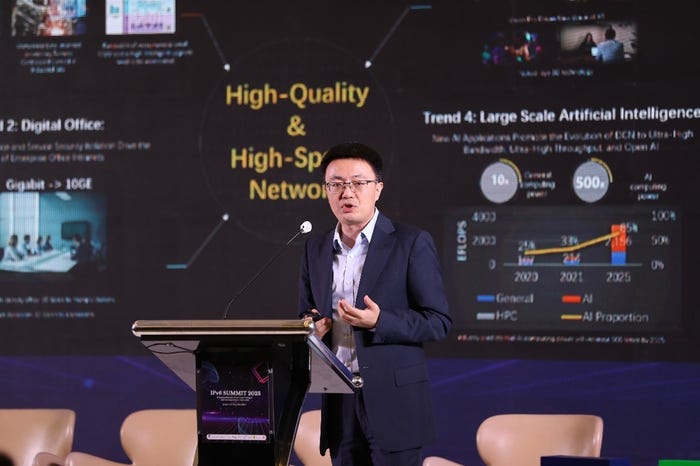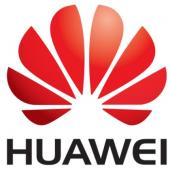Laying the Network Foundation for Digital Economy Development in IndonesiaLaying the Network Foundation for Digital Economy Development in Indonesia
In Indonesia, next-generation 400GE IP transport networks are playing an important role in meeting the ultra-broadband connection requirements of mobile broadband, home broadband, enterprise private line, and enterprise campus scenarios.
December 22, 2023

Aiming to promote IPv6 innovation and accelerate the construction of next-generation network infrastructure toward Intelligent Indonesia Digital Vision 2030 & 2045, IPv6 Industry 2023 was held in Indonesia, gathering government regulatory authorities, carriers, and industry organizations.
At the event, Ryan Qiu, Vice President of Huawei Data Communication Product Line, delivered a speech titled "IPv6 Enhanced, the Cornerstone of Digitalization." He noted that in the current era, intelligent applications such as smart office, digital production, and immersive experience are emerging one after another, driving network infrastructure to be upgraded for higher speed and quality.
IPv6 Enhanced capabilities, such as 400GE, SRv6, network slicing, and Network Digital Map, are ideal for building next-generation IP transport networks to meet the ubiquitous ultra-broadband connection requirements of mobile broadband, home broadband, enterprise private line, and enterprise campus scenarios. These capabilities enable the digital development of individuals, homes, and enterprises, boosting the digital economy.
As digitalization sweeps across the world, more than 100 countries have released their digital strategies. In 2021, Indonesia initiated Roadmap Indonesia Digital 2021–2024, in an effort to implement digital transformation by accelerating the development of infrastructure, digital government, digital economy, and digital society. Digital transformation requires high-speed and high-quality ICT infrastructure.
As a bridge between the physical and digital worlds, IP networks play a pivotal role in connecting all things and applications. Network transport evolution from IPv4 to IPv6 has become a consensus around the world. IPv6 has inherent advantages in technologies, costs, and industry maturity. Building next-generation transport networks with IPv6 Enhanced capabilities has become the trend of network evolution and the cornerstone for the digitalization of individuals, homes, and enterprises.
UHD video applications for individuals and homes are booming, and immersive XR and AR applications are gradually maturing. As a result, consumers require a better broadband experience, meaning that individual and home network traffic will grow explosively. Indonesia has witnessed a more than 20% increase in video application traffic over the past two years. The ultra-broadband 400GE capability will become a basic evolution requirement of transport networks.
Additionally, due to the large number of islands that form Indonesia, inter-island network link resources are very important. It is imperative to maximize resource utilization. Given the difficulties associated with traditional manual optimization and O&M, networks urgently need to improve multi-dimensional visualization, path optimization, and other capabilities for automated and intelligent O&M.
Digital government is an integral part of Indonesia's digital transformation. It requires improving business processes, digitalizing e-government and services, strengthening connections between regional and central governments, and ensuring business security and data sharing. As increasingly more digital governments and enterprises use multi-cloud access connections for office and production, higher requirements are imposed on network connection flexibility and SLA assurance differentiation. To meet these new requirements, next-generation IP transport networks must be capable of providing 400GE ultra-broadband transport, resilient and flexible connections, differentiated assurance, and Network Digital Map to drive digital transformation.
Next-generation IP transport networks play an important role in the individual, home, and industry fields among others. In the carrier field, 400GE IP transport networks will meet the requirements for massive GE or 10GE mobile broadband and home broadband connections, improve user experience, increase the ARPU, and help carriers grow revenue in traditional services. Intelligent path selection based on SRv6 and Network Digital Map will maximize network resource utilization, improve O&M automation, and increase network resource efficiency by 30%. And in the digital government field, one network carries multiple government service applications. Network slicing provides data security isolation in addition to differentiated service SLA assurance. Moreover, Cloud-Network Express provides one-hop access to multiple clouds, significantly improving the efficiency of government digital transformation.
Leading carriers in Indonesia have begun their exploration of next-generation IP transport networks. With the ramp-up of FTTH, massive growth of 4G users, and pilot use of 5G packages, increasingly higher requirements are imposed on network transport experience. Currently, 400GE deployment is a suitable choice for handling the rapid growth of traffic. An IP network deployed with SRv6 and Network Digital Map can be continuously optimized to deliver optimal user experience.

Ryan Qiu, Vice President of Huawei Data Communication Product Line
According to Qiu, the key capabilities — such as 400GE transport, SRv6, network slicing, and Network Digital Map — of next-generation IP transport networks have been deployed and applied by 20 carriers in Europe, the Middle East & Central Asia, Asia Pacific, and Latin America. These innovative technologies are becoming mature in terms of standards, interoperability, application, and deployment.
With the emergence of increasingly more digital applications, home broadband, mobile broadband, enterprise campus, and enterprise private lines all need to be upgraded to 10GE. Next-generation IP transport networks not only support the comprehensive development of 5G mobile transport, gigabit home broadband, and agile enterprise private line services, but also support future-oriented ubiquitous 10GE connections. In addition to protecting investments, such long-term network evolution also boosts service revenue growth and accelerates digital transformation for carriers.
About the Author
You May Also Like




